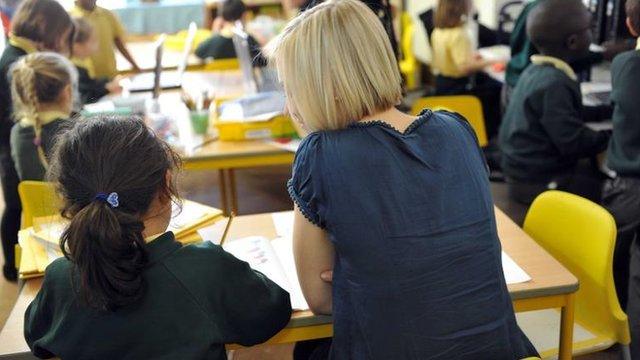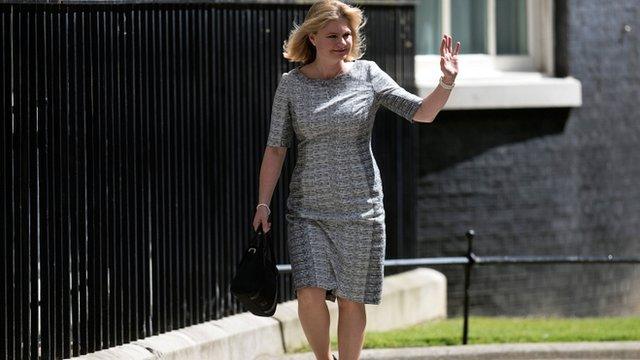Extra 750,000 school places needed in population surge
- Published

The school population is going to rise by 10% in the next decade
An extra 750,000 school places will be needed in England by 2025 to keep up with a population bulge, says an official forecast from the Department for Education.
The pressure on creating new schools and extra classrooms will be one of the challenges for incoming Education Secretary Justine Greening.
Schools will have faced 16 consecutive years of rising pupil numbers.
The Department for Education says it has committed £7bn to extra places.
Between 2009 and 2016, the school system had already expanded to take in an extra 470,000 pupils.
'Massive increase'
From 2016 to 2025, the projection says there will be another 10% of pupils in the state school system, up from about 7.4 million to about 8.1 million.
Head teachers' leaders say that this "massive increase" will make it even harder for parents to get their preferred choice of school.

Justine Greening, the new education secretary, will need to tackle the rising demand for school places
The official forecast from the Department for Education is used to plan for school places, classrooms, buildings and teaching staff.
The projection shows that the population bulge is moving through the secondary years - but that the increase in primary numbers is slowing.
The primary population is now 4.5 million - and the forecast predicts this will rise to 4.68 million in four years' time when it will stabilise.
The annual school census, published last month, showed the pressure on places had increased the average size of a primary school by 30 pupils, equivalent to an extra class.
Rising birth rate
But the next big increase will be in secondary schools, currently with 2.76 million pupils and forecast to rise to 3.04 million in 2020 and then 3.33 million in 2025.
It means that within the next decade secondary schools will have to create an extra 570,000 places - and these figures do not include post-16 education or sixth forms.

The biggest increases are going to be in the secondary age group, up by 570,000 in a decade
The increase has been driven by a rising birth rate - and the analysis says this reflects an increasing number of non-UK born mothers, who tend to have bigger families.
The forecast says "direct immigration of pupils" has had only a very small effect.
Russell Hobby, leader of the National Association of Head Teachers, said there needed to be much better integrated planning for extra places, including the involvement of local authorities.
"We are looking at over 750,000 more young people in school education by 2025. The government's only clear plan for increasing capacity is to open 500 free schools. Whilst good, new free schools are fine, they are not sufficient.
"The government will also need to take teacher recruitment and retention more seriously," said Mr Hobby.
The New Schools Network, which supports the opening of free schools, says that when all the free schools that are open and which have been approved are at full capacity they will have created an extra 250,000 places.
Sarah Pearson, interim director, said: "We mustn't lose sight that they are also about bringing new people and ideas into education and driving up standards across the board."
Teacher shortage
There have been warnings from school leaders about a shortage of teachers and problems with retention - and figures from the Institute for Fiscal Studies, published on Friday, showed that 40% of teachers who enter initial teacher training were not teaching five years later.
It means that 14,000 people who enter teacher training each year are not in the classroom five years later.
A Department for Education spokeswoman said the government had already committed £7bn to the "top priority" of creating school places, which along with more free schools, would provide 600,000 more places in the next five years.
"The latest figures show that the system is responding well to growing numbers of pupils - fewer children are being taught in large infant classes, the average primary school class sizes remain stable at 27.1 pupils and the vast majority of parents get places in their preferred schools."